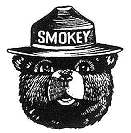United States Department of Agriculture, Forest Service, National Agroforestry Center

United States Department of Agriculture, Forest Service / University of Nebraska-Lincoln: Faculty Publications
Document Type
Article
Date of this Version
2015
Citation
Parks, S. A., C. Miller, M.-A. Parisien, L. M. Holsinger, S. Z. Dobrowski, and J. Abatzoglou. 2015. Wildland fire deficit and surplus in the western United States, 1984–2012. Ecosphere 6(12):275.
Abstract
Wildland fire is an important disturbance agent in the western US and globally. However, the natural role of fire has been disrupted in many regions due to the influence of human activities, which have the potential to either exclude or promote fire, resulting in a ‘‘fire deficit’’ or ‘‘fire surplus’’, respectively. In this study, we developed a model of expected area burned for the western US as a function of climate from 1984 to 2012.We then quantified departures from expected area burned to identify geographic regions with fire deficit or surplus. We developed our model of area burned as a function of several climatic variables from reference areas with low human influence; the relationship between climate and fire is strong in these areas. We then quantified the degree of fire deficit or surplus for all areas of the western US as the difference between expected (as predicted with the model) and observed area burned from 1984 to 2012. Results indicate that many forested areas in the western US experienced a fire deficit from 1984 to 2012, likely due to fire exclusion by human activities. We also found that large expanses of non-forested regions experienced a fire surplus, presumably due to introduced annual grasses and the prevalence of anthropogenic ignitions. The heterogeneity in patterns of fire deficit and surplus among ecoregions emphasizes fundamentally different ecosystem sensitivities to human influences and suggests that largescale adaptation and mitigation strategies will be necessary in order to restore and maintain resilient, healthy, and naturally functioning ecosystems.


Comments
U.S. Government Work